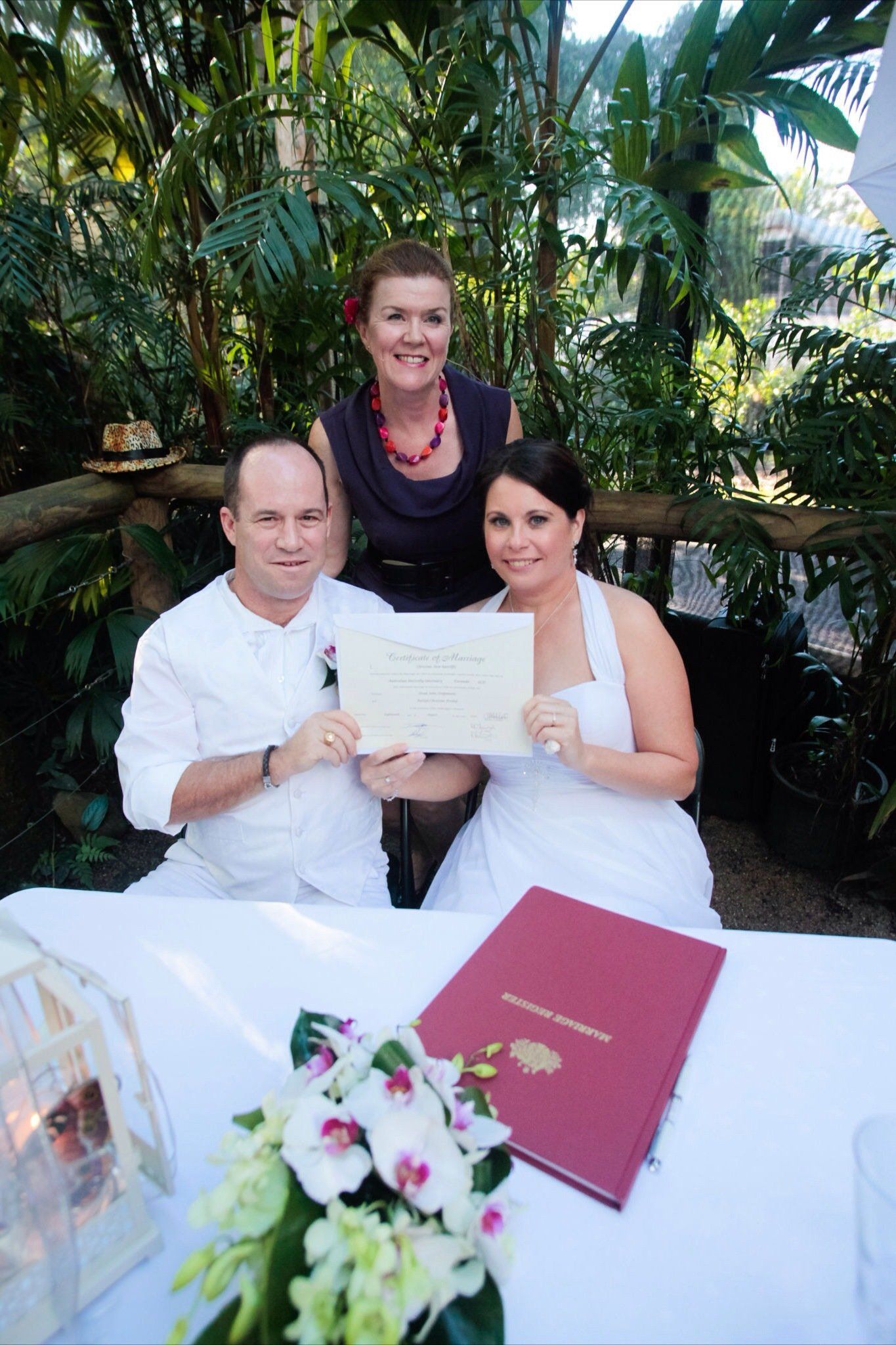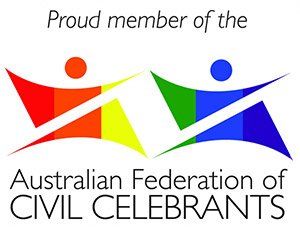-
FINDING THE RIGHT MARRIAGE CELEBRANT
Your wedding day is one of the most important days of your life, and so choosing the right marriage celebrant will ensure that your day is a memorable one.
However, if you choose to use the services of another Civil Marriage Celebrant, Chrissy Ratcliffe recommends that you ensure that your proposed Celebrant is authorised as a Civil Marriage Celebrant under the Marriage Act 1961 by checking the register of Marriage Celebrants.
You will find Marriage Celebrants from religious organisations as well as Celebrants from non-recognised denominations on the list of authorised marriage celebrants. You might also like to contact the relevant Marriage Celebrant Association in your area for further information.
-
PROVIDING NOTICE OF YOUR INTENDED MARRIAGE
You must give a completed Notice of Intended Marriage form to the authorised Marriage Celebrant who is to conduct your marriage within 18 months of your proposed marriage and no later than one month and one day prior. All Marriage Celebrants should have all the necessary paper work to perform your marriage.
Copies of the Notice can be obtained from Celebrants, or from the Registry of Births, Deaths and Marriages in each State or Territory . Alternatively, a copy of the Notice can be downloaded here . You will also require certain documents such as birth certificates (original) and evidence that any prior marriage has been dissolved by death or divorce.
A copy of the Notice of Intended Marriage can be download here.
-
WAITING TIME
In certain circumstances, the statutory period of notification between lodging the Notice of Intended Marriage with your Marriage Celebrant and the solemnisation of the marriage can be shortened. This period is currently not less than a clear calendar month, and only a prescribed authority has the power to shorten this time (usually at your Local Court or Registry officials) and he or she must be satisfied that the particular circumstances justify doing so.
Your Marriage Celebrant can assist you to find the prescribed authority nearest to you. Shortening of time is not lightly granted, and must be supported by appropriate evidence. There are the five categories of circumstances set out in the regulations, which include:
- Employment related or other travel commitments;
- Wedding or celebration arrangements, or religious considerations;
- Medical reasons;
- Legal proceedings;
- Error in giving notice
The reason for seeking a shortening of time for notice must fall within one of these categories before an application can be considered. There is no capacity to grant shortening of time outside these circumstances.
Shortening of time is not automatic. When making a decision, the Registry of Births, Deaths and Marriages or prescribed authority will weigh up the information provided in support of the application and may seek additional information as outlined in the regulations. You should ensure that you have documentation that supports your request before approaching a prescribed authority.
-
TRANSFER
If for some reason you need to change your Marriage Celebrant , it is the responsibility of the first marriage celebrant to ensure the Notice of Intended Marriage form is transferred safely by hand or registered post. You must ask the original Marriage Celebrant to transfer the notice for you.
-
PARTICIPATING IN A MARRIAGE CEREMONY
People not authorised as Marriage Celebrants may participate in aspects of a marriage ceremony. However, there are several legal requirements relating to getting married that can only be fulfilled by an authorised Marriage Celebrant before, during and after the ceremony.
At the ceremony, the authorised marriage celebrant must complete the following:
- To consent to be present as the responsible authorised Marriage Celebrant;
- To take a public role in the ceremony;
- To identify themselves to the assembled parties, witnesses and guests as the celebrant authorised to solemnise the marriage;
- To be responsible for ensuring the validity of the marriage according to law;
- To say the words required by Section 46 in the presence of the parties, the formal witnesses and the guests before the marriage is solemnised;
- To be in close proximity when the vows required by Section 45(2) are exchanged because it is the exchange of vows that constitutes the marriage and the authorised Marriage Celebrant must ensure that they see and hear the vows exchanged;
- To be available to intervene (and exercise the responsibility to intervene) if events demonstrate the need for it elsewhere in the ceremony;
- To be part of the ceremonial group or in close proximity to it;
- To sign the papers required by the Act..
-
THE MARRIAGE CERTIFICATE
From 1 September 2005, a Marriage Celebrant must issue a prescribed Form 15 marriage certificate to you after your wedding. The certificate is given to you after the ceremony as evidence of your marriage. When you get married, your Marriage Celebrant prepares three certificates of marriage.
All three certificates contain the details of your marriage and you and your witnesses will be required to sign all three certificates. They are: the certificate retained by the Marriage Celebrant for their records; the certificate that will be forwarded to the Registry of Births, Deaths and Marriages for the registration of your marriage; and , the certificate that you will be given as your record of the marriage.
-
GETTING MARRIED IN AUSTRALIA
For information on getting married overseas please contact the Embassy or other diplomatic mission of the country concerned. If that country requires you to obtain a Certificate of No Impediment to Marriage, contact the Department of Foreign Affairs and Trade on (02) 6261 3015. They can assist with information required to lodge the relevant paperwork for your country of choice.
For more information, please visit www.smartraveller.gov.au



